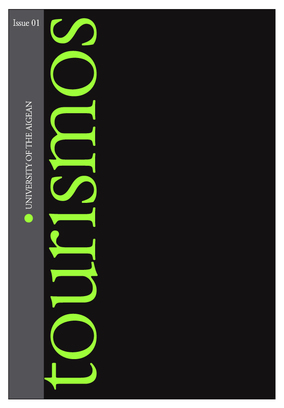Transitional developments and spatial re-organization of spa tourism in Greece
Part of : Tourismos : an international multidiciplinary journal of tourism ; Vol.7, No.2, 2012, pages 279-297
Issue:
Pages:
279-297
Section Title:
Research papers
Abstract:
The present paper seeks to confirm that spa tourism is now in a period of transition following extensive, questionnaire-based fieldwork in Greece’s prime spa destinations. The research sought primarily to profile the different types of spa visitors today, and secondarily to identify the visitor-type who will predominate in the years ahead. The paper’s ultimate aim is to use its conclusions and the trends it uncovers to draw up general guidelines for contemporary spatial planning in spa tourism destinations in accordance with contemporary views and needs.
Subject:
Subject (LC):
Keywords:
spa tourism, spatial organization and planning
Notes:
Περιέχει σχήματα, πίνακες και βιβλιογραφία
References (1):
- Boyer, M. (2005). Le thermalisme dans le grand Sud-Est de la France. Grenoble, Presses Universitaires de Grenoble.Charitakis, C. (1935). Hot springs and spa towns in Greece - Medical Encyclopaedia of “Anexartitos”. Athens, “Anexartitos” Newspaper Publications (in Greek).Didascalou, E., Lagos, D. & Nastos, P. (2009). Wellness Tourism: Evaluating destination attributes for tourism planning in a competitive segment market. Tourismos, Vol. 4, No.4, pp.113-125.Douglas, N., Douglas, N. & Derrett, R. (2001). Special interest tourism. Australia, John Wiley & Sons, Milton.Duquenne, M.-N. (2005). Local specificities – local dynamics: a guide on their survey: presentation of products – tools evaluation guide. Initiative Equal -Action 3. Athens-Volos, University of Thessaly and Hellenic Agency for Local Development (EETAA) (in Greek).Federterme Federazione Italiana delle Industrie Termali e delle Acque Minerali Curative – FEDERTERME (2004). Rapporto sul sistema termale in Italia (Rapporto di richerca, coordinatore dela ricerca: Emilio Becheri). Roma, Federterme.Galdini, R. (2007).Tourism & the city: opportunity for regeneration. Tourismos, Vol. 2, No.2, pp.95-111.Gerbod, P. (2004). Loisirs et santé: les thermalismes en Europe des origines à nos jours. Paris, Honoré Champion.Greek Association of Hot Springs Municipalities & Greek Thermal Agency (2006). Hot Springs and Spa Towns: Greek Thermalism. Thessaloniki, G.A.H.S.M. – G.T.A. (in Greek).Hellenic Ministry of Economy and Finance / General Secretariat for Information Systems (2003). Statistics about declared annual income per household. Http://www.gsis.gr/ggps/statistika/2003/statistika_2003.html. Accessed the 15th of May 2010, at 12:35.Jaltet, M. (1985). La santé par les eaux: 2000 ans de thermalisme. Paris, L’instant durable.Jamot, C. (1988). Thermalisme et villes thermales en France. Clermont Ferrand, Publications de l’Institut d’Etudes du Massif Central.Lekkas, Ν. (1938). The 750 mineral springs of Greece. Athens, IGME (in Greek).Mavromatis, G. (1999). Statistics Models and Methods of Data Analysis. Thessaloniki, University Studio Press (in Greek).Ministry of Environment, Spatial Planning and Public Works – M.E.S.P.P.W (2000). Strategic spatial planning study for thermal tourism development in Greece. Unpublished study. Athens, Greece: M.E.S.P.P.W. (in Greek).Moldoveanu, M., Meade, M. & Lafon, X. (1999). Ciudades termales en Europa. Barcelona – Madrid, Lunwerg Editores S.A..Skarpia-Hoipel, X. (1996). Hydrotherapy and leisure: historical evolution of hot baths. Thessaloniki, University Studio Press (in Greek).Spathi, S. (2000). The development of spa and health tourism in Greece, Athens, KEPE (in Greek).Tsartas, P., Manologlou, E. & Markou, A. (in cooperation with Alisson, E. and Sagia, I.) (2001). Quality characteristics and demand trends of internal tourism. Athens, ΕΚΚΕ (in Greek).Vasileiou, M. & Tsartas, P. (2009). The wellness tourism market in Greece – an interdisciplinary methodology approach. Tourismos, Vol. 4, No.4, pp.127-144.




